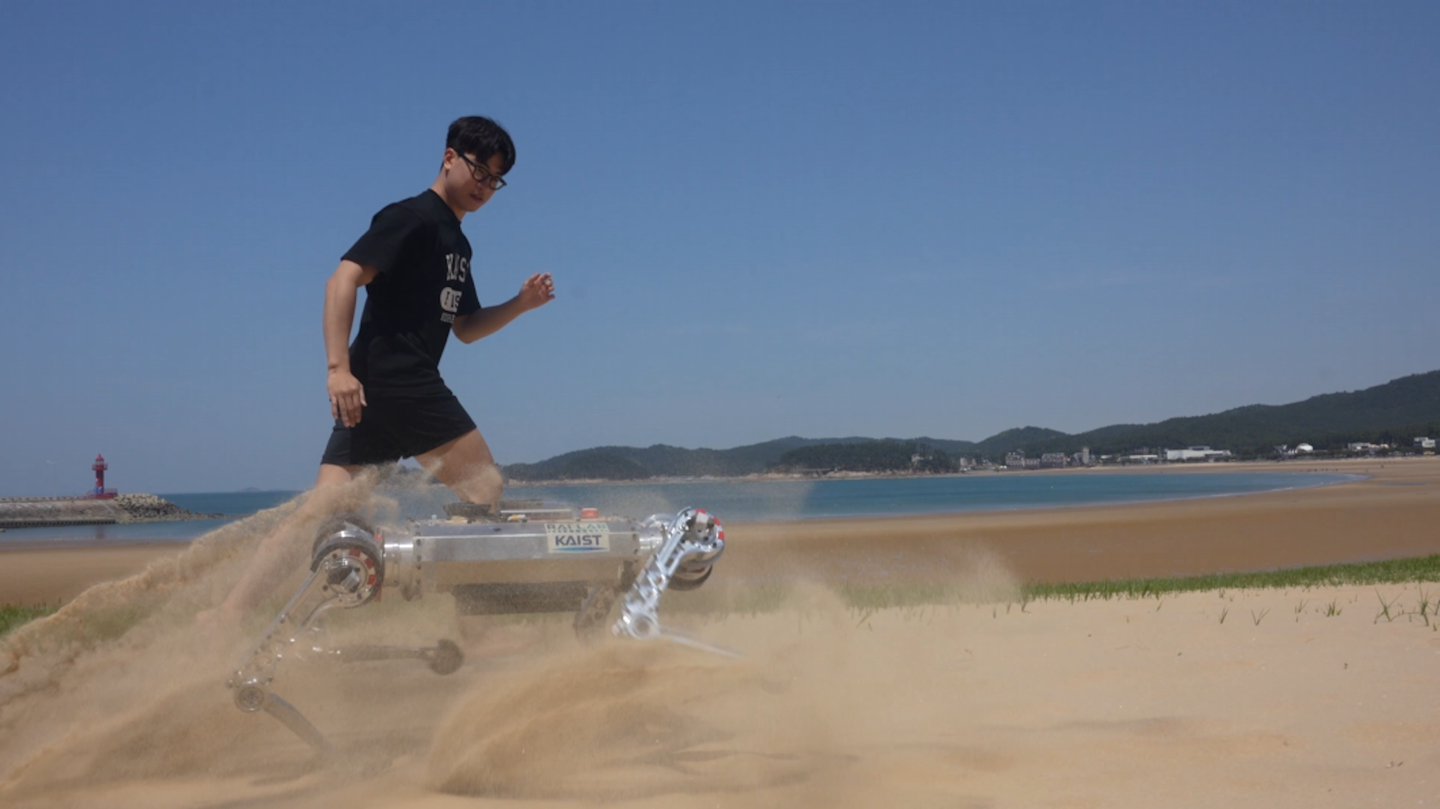
Legged robots have become definitively more agile in recent years, but often still remain limited by tricky terrain. One bot optimized for flat, hard surfaces might not fare as well as another designed more specifically for dynamic areas like muddy fields or sandy beaches—or ceilings, for that matter. A new quadrupedal robot control technology developed by researchers at the Korea Advanced Institute of Science and Technology (KAIST) appears to be breaking down those literal and physical barriers, thanks to help from AI reinforcement learning.
In reinforcement learning, a huge variety of simulations are generated that approximate physical trials, thereby shortening the training times needed for an AI to optimize itself towards its intended goals. Led by Professor Jemin Hwangbo of KAIST’s Department of Mechanical Engineering, their team created a new artificial neural network capable of making real-time terrain assessments sans any prior information, then feeding that knowledge back to their four-legged robot, RaiBo.
In this case, however, the KAIST researchers also defined a new contact modeling based on the robot’s physical pressure interacting with the ground reactions of various mediums to simulate deforming terrain, such as sand. All of this information was then fed into RaiBo’s AI to produce some truly impressive results.
[Related: The newest robot dog can scale walls and ceilings.]
According to the team’s study published earlier this month in the journal Science Robotics, their dog-bot demonstrated its ability to jog across a beach at roughly 3m per second with its feet fully submerged in sand. RaiBo could also run across grassy fields and a running track without any additional programming or control algorithm tweaking.
“It has been shown that providing a learning-based controller with a close contact experience with real deforming ground is essential for application to deforming terrain,” Suyoung Choi, the paper’s first author, said in a statement.
Because the new proposed controller can be used without any prior information on a terrain, it can easily be applied to future AI walking research, such as how to get a robot to gracefully move atop an air mattress, something RaiBo also reportedly could accomplish.
The post This Korean robodog proves running on sand isn’t just for ‘Baywatch’ appeared first on Popular Science.
Articles may contain affiliate links which enable us to share in the revenue of any purchases made.
from Popular Science https://ift.tt/PwS1sut




0 Comments